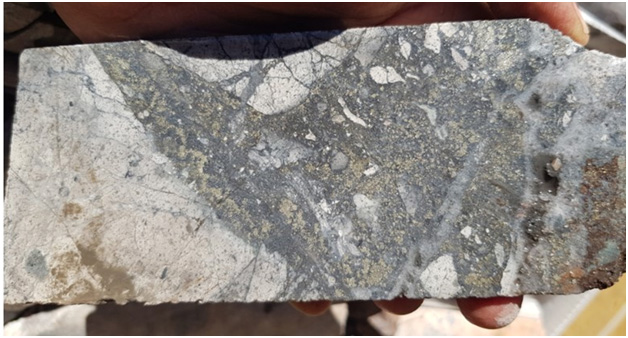
Radius Gold has released the first results from phase three drilling being conducted by Pan American Silver at its Amalia gold-silver project in Mexico’s Chihuahua state.
Hole 16 returned 1.53 g/t gold and 21 g/t silver over 120 metres (estimated true width of 75 metres), including 4.61 g/t gold and 41 g/t silver across 23 metres (15 metres true width). Mineralization is hosted within the hanging wall of the San Pedro fault, one of three zones at Amalia that has so far been tested.
Along with previously drilled holes 9, 10 and 15, Radius reports that the four holes together outline a continuous zone of multi-phase, gold-silver mineralization extending from surface to the current drill defined depth of 300 metres.
In a deal signed last June, Pan American has an option to earn an initial 65% in the project in return for cash payments of $1.5 million and $2 million in exploration spending over four years
Hole 17, drilled 100 metres north of hole 16, did not return potentially economic mineralization, but it did cut a 30-metre-wide silicified fault breccia with anamolous gold and silver values. Radius believes deeper drilling may be warranted.
Pan American has taken over as operator of the phase three drill program, which started in October and will consist of 2,500 metres of drilling. Previous highlights from drilling at Amalia include 81 metres of 3.75 g/t gold and 61 g/t silver, and 44 metres of 12.38 g/t gold and 309.3 g/t silver.
In a deal signed last June, Pan American has an option to earn an initial 65% in the project in return for cash payments of $1.5 million and $2 million in exploration spending over four years. It can earn another 10% by advancing the project to pre-feasibility.
The epithermal gold project is located in the Sierra Madre gold belt, 25 km southwest of the historic Guadalupe y Calvo mining district in Chihuahua. Geological controls on mineralization at Amalia are complex, with multiple events of gold and silver mineralization within veins, stockworks and hydrothermal breccias.
(This article first appeared in the Canadian Mining Journal)